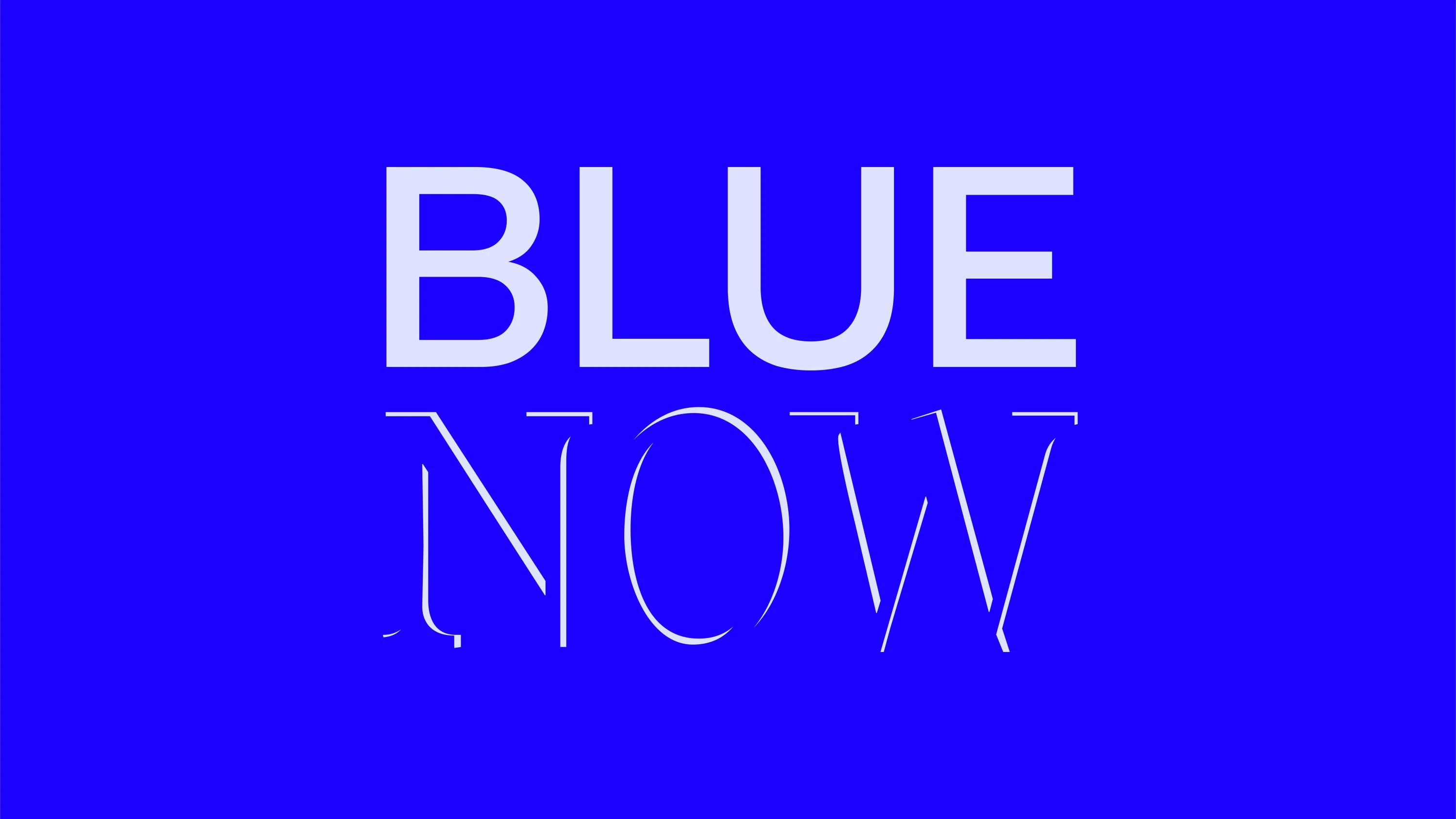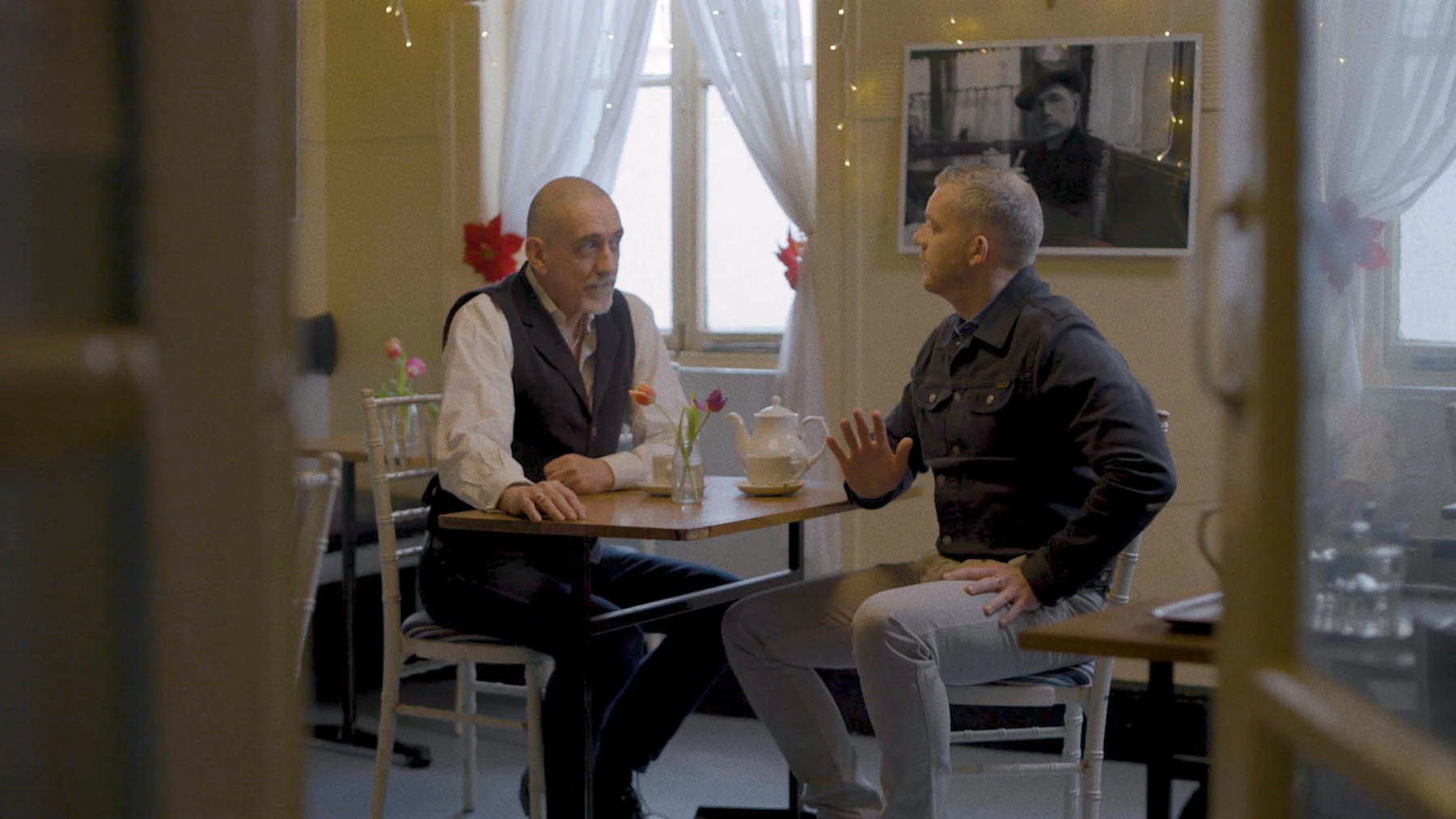


A celebration of Derek Jarman’s “Blue”
In collaboration with WePresent’s guest curator Russell Tovey, director Neil Bartlett and a host of performers present “BLUE NOW”—a series exploring the legacy of artist Derek Jarman’s seminal film “Blue”, unpacking its universal themes that still resonate today, 30 years after its release.
When artist Derek Jarman released “Blue” 30 years ago, the world was in the grip of an epidemic that took countless lives, and affected millions, but, at the time, never received the prominence or empathy in news culture that we have come to expect in subsequent years from deadly diseases. It was 1993 and the HIV/AIDS epidemic had been infecting and killing people for over a decade, but the LGBTQIA+ community who were most affected did not receive compassion, but demonization. In some ways since then, so much has changed, and in some ways, so much hasn’t.
Thirty years later we are still unpacking the consequences of the HIV/AIDS crisis and perhaps only now starting to understand its impact; the minds and creativity lost, yes, but also the seminal work, inspiration and warnings left for future generations. Perhaps this is why “Blue”, a film made in the final months of Derek Jarman’s life, as HIV/AIDS weakened his body, took his sight and forced him to confront death, continues to resonate with those who watch it. It is a film about death, but also about what makes us feel alive. It is about grief, joy, humor, fear, anger, love. It is a film that you can’t help but be moved by, be inspired by, be awed by. And it’s for exactly these reasons that Russell Tovey, WePresent’s current guest curator, has chosen “Blue”, in collaboration with director Neil Bartlett and a host of LGBTQIA+ performers, to revisit and celebrate.
Throughout “BLUE NOW”, Russell and his fellow artists—some who knew Derek personally, and some who have been inspired by him—discuss the significance of the artist, but also the ways in which the themes at play in “Blue” still echo through society today, and how our future can be shaped by lessons learned from those who went before us. Through contributions from Russell Tovey, Neil Bartlett, Simon Fisher Turner, Travis Alabanza, Jay Bernard and Joelle Taylor we invite you to discover “BLUE NOW”, and interpret it for yourself.

“Blue is Darkness Made Visual”
Derek Jarman was a prolific creator—a painter, set designer, writer, gardener, activist and filmmaker. But it’s perhaps one of his final artworks that, through its candid intimacy, stands out as his most seminal work. Released in 1993, just four months before his death from AIDS, “Blue” is a deeply personal film that charts the artist’s final months as he battles the complications of the disease and describes their impact on his daily life. The entire film is set to a single shot of Yves Klein blue, a choice made by Derek due to the fact that he had gone partially blind and his vision was occasionally interrupted by blue spots. The film, diary-like in its composition, deals with his innermost thoughts: “If I lose half my sight, will my vision be halved?”
In an homage to “Blue”, this short film by Dionne Edwards takes Russell Tovey and Neil Bartlett back to the revered Maison Bertaux, a centuries-old patisserie in London’s Soho where Derek used to sit in the upstairs room with tea and cake while working on his art. Sitting at the table where Derek would often sit (and where Neil too sat and wrote part of his first book) the pair reflect on their own first experiences of Derek Jarman and “Blue”, explore how Derek used his sexuality as activism and discuss just why the film has a transformative effect on those who watch it.

Special tributes to Derek Jarman
Here Russell Tovey, Neil Bartlett, Joelle Taylor, Jay Bernard, Simon Fisher Turner and Travis Alabanza, all inspired in some way by the themes in Jarman's “Blue” pen a piece of writing inspired by one of the artist’s quotes. Click the images below to head over to their essay.

BLUE NOW, live
For these very special performances of Derek Jarman’s BLUE, a cast of four actors including Russell Tovey, writer and theatre-maker Travis Alabanza, artist Jay Bernard and award-winning poet Joelle Taylor will deliver Jarman's powerful words in a performance directed by Neil Bartlett. The film's original composer, Simon Fisher Turner, will accompany them with a new live score.
7 May Theatre Royal Brighton, Brighton Festival
13 May Turner Contemporary, Margate
21 May HOME, Manchester
27 May Tate Modern, London

Where else to find / watch Derek’s work
Have we piqued your interest? Thought so. You can discover more of Derek’s Jarman’s work here:
Films
Discover Derek’s films, including Jubilee, The Garden and Caravaggio on BFI On Demand, or watch Caravaggio on Mubi.
Architecture
Visit Prospect Cottage, Derek’s creative refuge
Books
Read Dancing Ledge, Derek’s autobiography
Paintings
See Derek’s work in Palais De Tokyo, Paris, as part of the group exhibition “Exposées” until May 14, 2023
Or visit the group exhibition “Garden Futures, Designing with Nature” in the Vitra Design Museum, Switzerland until October 10, 2023.
View Derek’s painting Ataxia-AIDS is Fun on the Tate website
Explore Derek’s other paintings, including Trick and Queer at various locations around the UK